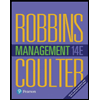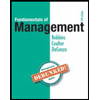
Concept explainers
To Determine:
The importance of continual improvement and thinking of manufacturing as a system in managing operations.
Introduction:
Operation management refers to resources such as labour and raw material when converted into the goods and services by the operation management by designing, operation and control and transformation process that convert these resources.
Answer to Problem 1DT
Solution:
Continual improvement and thinking of manufacturing as a system is so important to managing operations because it reduces the waste and increases efficiency.
Explanation of Solution
Continuous improvement refers to the continually improvement of process, business and way of working. It gets complicated as how it is studied, planned and implemented. Throughout the organization the philosophy of logical, constant and sustainable development is needed to be encouraged. It becomes all time way of operating.
It can range from the simple daily changes to major changes in focus. To find out what works best for the company the company dive right in and dramatically reduces waste and increases efficiency.
Want to see more full solutions like this?
Chapter 15 Solutions
Fundamentals of Management: Essential Concepts and Applications (9th Edition)
- You are the newly appointed CEO of TechSouth, a South African multinational technology company based in Cape Town. TechSouth specialises in manufacturing smartphones, laptops, and smart home devices. The company has a significant presence in the African market and has recently expanded into Europe and Asia. However, TechSouth is facing several critical challenges:· Declining Market Share - Over the past three years, TechSouth has lost considerable market share to both localcompetitors and international giants like Samsung and Apple. The company's products are perceived as outdated and lacking innovation.· Employee Engagement Issues - Recent employee surveys indicate low morale and engagement levels, particularly among the younger workforce, leading to high turnover rates. Many employees feel disconnected from the company's vision and mission.· Siloed Departments - The organizational structure at TechSouth is highly siloed, with departments operatingindependently rather than…arrow_forwardProvide an introduction that is brief, entertaining, and clearly communicates the project's aim. It should succinctly summarise the scenario and significant problems, describe the strategy used to answer the issue, and offer context for the project. The project's goal should be articulated clearly to attract the reader's attention.arrow_forwardAssess leadership capacity development by describing a leadership development framework, identifying high-potential employees, outlining mentoring and coaching programmes, forming cross-functional teams and projects, detailing stakeholder management strategies, overcoming resistance to change, providing conflict resolution strategies, identifying future leaders, and fostering a culture of continuous learning and growth. Include tactics for dealing with opposition and resolving problems.arrow_forward
- Geert Hofstede's cultural dimensions theory is a framework for cross-cultural communication, which describes the effects of a society's culture on the values of its members, and how these values relate to behavior. The four dimensions that Hofstede identified are: power distance, uncertainty avoidance, masculinity vs. femininity, and individualism vs. collectivism. According to Hofstede's research, the Philippines scores high on the Power Distance Index (PDI), which means that the society accepts an unequal distribution of power and people understand their place in the system. The Uncertainty Avoidance Index (UAI) is also high, indicating that the society does not tolerate uncertainty and ambiguity, and tries to minimize the possibility of such situations by strict laws and rules, safety and security measures. The country scores low on the Individualism (IDV) dimension, which means that the society is Collectivist as compared to Individualist. This is manifest in a close…arrow_forwardHow would you monitor the strategy process to ensure that your strategic initiative succeeds? What should be monitored and why? Which Key Performance Indicators (KPIs) needed to be measured and monitored?arrow_forwardCompare and contrast descriptive statistics and inferential statistics. Explain the relationship of population, sampling frame, sampling design, and generalization.arrow_forward
- The research methods used to collect data are Qualitative and Quantitative. If True, discuss. If False, discuss.arrow_forwardIs it important to define the research problem before we collect the data?arrow_forwardContext: I'm a Business Management major in my senior year at University Question: What do you think is your strongest ability and how did you end up being good at it?arrow_forward
- I'm a Business Management major in my senior year at University Question: What would you and others say are five of your personality pluses? And Why?arrow_forwardI'm a Business Management major in my senior year at University Question: What new skills have you learned in the last year? And why were they worth learning?arrow_forwardof the various structures in place today, what do you see as the most beneficial to a technology-laden, forward-thinking organization, and why?arrow_forward
 Understanding BusinessManagementISBN:9781259929434Author:William NickelsPublisher:McGraw-Hill Education
Understanding BusinessManagementISBN:9781259929434Author:William NickelsPublisher:McGraw-Hill Education Management (14th Edition)ManagementISBN:9780134527604Author:Stephen P. Robbins, Mary A. CoulterPublisher:PEARSON
Management (14th Edition)ManagementISBN:9780134527604Author:Stephen P. Robbins, Mary A. CoulterPublisher:PEARSON Spreadsheet Modeling & Decision Analysis: A Pract...ManagementISBN:9781305947412Author:Cliff RagsdalePublisher:Cengage Learning
Spreadsheet Modeling & Decision Analysis: A Pract...ManagementISBN:9781305947412Author:Cliff RagsdalePublisher:Cengage Learning Management Information Systems: Managing The Digi...ManagementISBN:9780135191798Author:Kenneth C. Laudon, Jane P. LaudonPublisher:PEARSON
Management Information Systems: Managing The Digi...ManagementISBN:9780135191798Author:Kenneth C. Laudon, Jane P. LaudonPublisher:PEARSON Business Essentials (12th Edition) (What's New in...ManagementISBN:9780134728391Author:Ronald J. Ebert, Ricky W. GriffinPublisher:PEARSON
Business Essentials (12th Edition) (What's New in...ManagementISBN:9780134728391Author:Ronald J. Ebert, Ricky W. GriffinPublisher:PEARSON Fundamentals of Management (10th Edition)ManagementISBN:9780134237473Author:Stephen P. Robbins, Mary A. Coulter, David A. De CenzoPublisher:PEARSON
Fundamentals of Management (10th Edition)ManagementISBN:9780134237473Author:Stephen P. Robbins, Mary A. Coulter, David A. De CenzoPublisher:PEARSON





